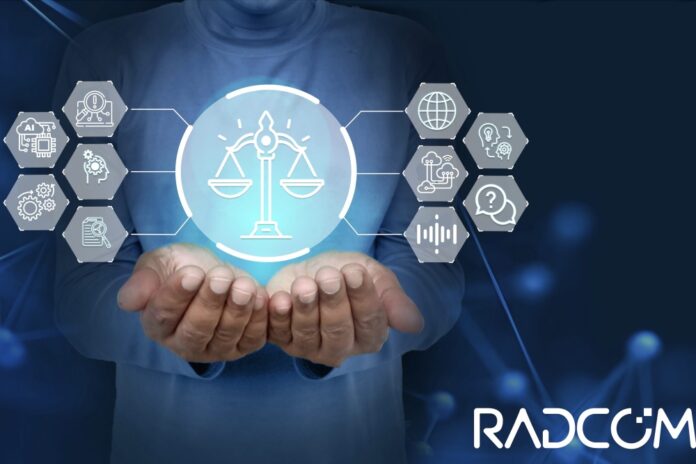Partner content: High customer expectations and fierce competition mean telecos are looking to automation to transform their business processes and agility
As telcos look to become more agile and tranform business processes, 3GPP’s latest Release 18, introduces new capabilities and features to drive automation forward. It is aimed at enhancing performance, supporting new use cases, and improving network efficiency.
They include the development of robust AI/ML models and their integration for network automation, the implementation of real-time data analytics and ensuring these models can be updated dynamically. All this while providing ultra-reliable, low-latency communications (URLLC) and managing energy-efficient network resources in different scenarios, which adds considerable complexity to network design, and operation. These complexities will require an even higher level of automation that will be essential for optimal customer experience.
AI’s adoption
One of the tools driving operational automation of telecom networks is artificial intelligence (AI). Already we see AI-powered platforms on 5G networks which have created tangible value for operators and users. It is evident that AI is now a strong factor in the digital revolution to help with network optimization, security, quality, planning, field operations and more. Further enhancing this AI transformation is the deployment of Generative AI (GenAI) applications and Large Language Models (LLMs).
A recent survey of telecom professionals around the world conducted by Nvidia revealed the enthusiasm for GenAI with 48% of respondents feel that customer experience is the biggest opportunity for GenAI, while 48% said they are using it for network operations and management. Analysts are also expecting the investment in AI in the telecom arena to increase, with 66% of Nvidia survey respondents reporting their budget for AI will increase in the next year.
China Telecom for example has been investing in its data collection and LLM model for quite some time to establish more automated processes. Qian Bing, R&D Director told TM Forum already in 2023 how it is building its own AI-based system, “We will study the manual processes and establish more automated processes and knowledge extraction technologies.” AT&T’s, Ask AT&T Tool, which was launched in June, comes off AT&Ts long-term implementation of AI and ML.
Andy Markus, chief data officer at AT&T commented in a blog post, that it is “fundamentally changing the way we work with the ability to reduce employee meeting time by providing automated summaries and action items.” And Telefonica announced at DTW24 that it is working with its partners to develop GenAI solutions, “to automate lifecycle management and promote personalized offers for users.”
AI For Good
Whether operators are developing their own AI solutions, using open-source tools or taking an AI-as-a-service approach, like with all technologies, the potential for misuse remains enormous. Implementing AI-driven technologies to take networks to the next level automation needs to come with responsible AI and an AI for good approach.
The United Nations International Telecommunications Unit defines the goal to identify practical applications of AI to advance sustainable development goals and scale those solutions for global impact. With telecoms holding significant amounts of personal customer data, the introduction of AI tools, while resolving customer issues faster, could also have serious consequences left in the wrong hands.
The good news is that applying responsible AI policies should not be something out of operators’ comfort zone. For one, many have already had to contend with industry standards like CCPA and GDPR compliancy for years. These often come with high financial penalties if found to be non-compliant.
GDPR demands that telecom companies are required to implement transparent consent mechanisms and strong cybersecurity measures with many appointing a Data Protection Officer to ensure compliancy and implement policies. GDPR also demands that personal data be kept separate from other data ensuring only relevant data is collected and stored.
Translating AI principles and regulations into practice, while not easy, should be something telecoms are adept at doing, using their existing privacy processes to extend to additional AI ethics and regulations.
Breaking down the barriers
Responsible AI demands operators set in place strong data governance, human oversight, accuracy, robustness and security. All these are also necessary for strong network automation.
Responsible AI means that operators reduce the danger of AI bias and hallucinations. Bias due to imbalanced datasets can impact network operations and customer interactions. At the recent 2024 DSP Leaders World Forum, Diego Lopez, Senior Technology Expert at Telefonica said a key consideration when moving towards automation is, “how we guarantee sustained and trustworthy data flows that can be properly interpreted by the control elements.”
Operators’ massive amounts of data are typically dispersed across multiple, siloed sources which often makes correlation of data cumbersome and time-consuming. Automation would demand that the data analyzed be accurate for optimal network optimization and fault detection. This is another element of responsible AI, which Lopez noted in his talk in relation to automation, “how to control the essential properties related to authenticating the data and the sources of the data.”
Developing guardrails and protocols to mitigate risks and ensuring AI decisions implemented for network control are accurate, are not only key aspects of responsible AI, but they are also essential for automated networks. Automated networks need predictive models which rely on AI to interpret accurate, anonymized data.
The (business) value of responsible AI
While most operators agree that AI and automation technologies can improve network capabilities, ensuring responsible AI should be viewed as a value driver moving telecoms towards a business goal, rather than a burden.
This trusted, accurate data accelerated by AI is not only a key element of service assurance and automation but as Markus of AT&T noted, AI “…Helps us identify threats – including AI-created attacks – before they impact our company or our customers. The focus on responsible AI is entirely appropriate.”
Operators with strong data governance need to build on their proven internal procedures and adapt them in response to the changing regulatory requirements. These procedures will ensure clean, reliable data to maximize business processes, fuel efficient service assurance and contribute to trustworthy automation technologies.
About the author

Yariv Waits



